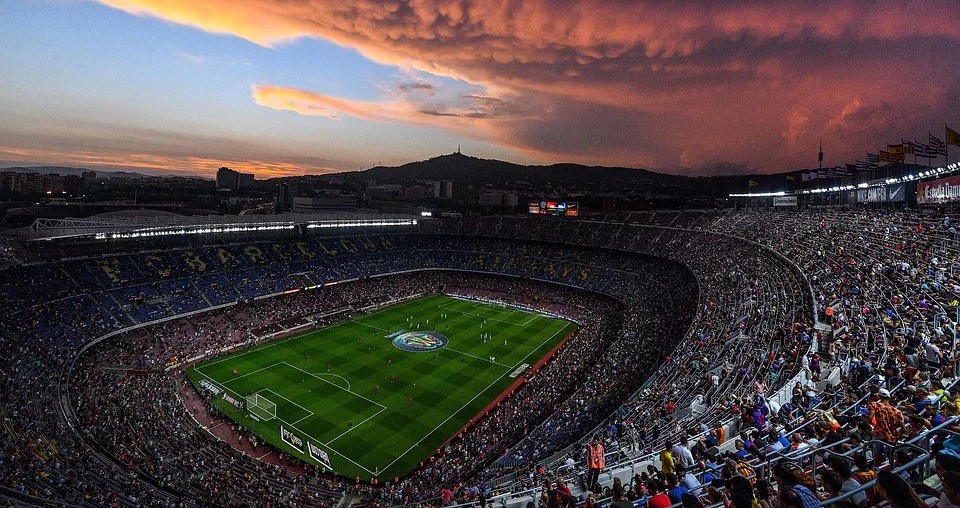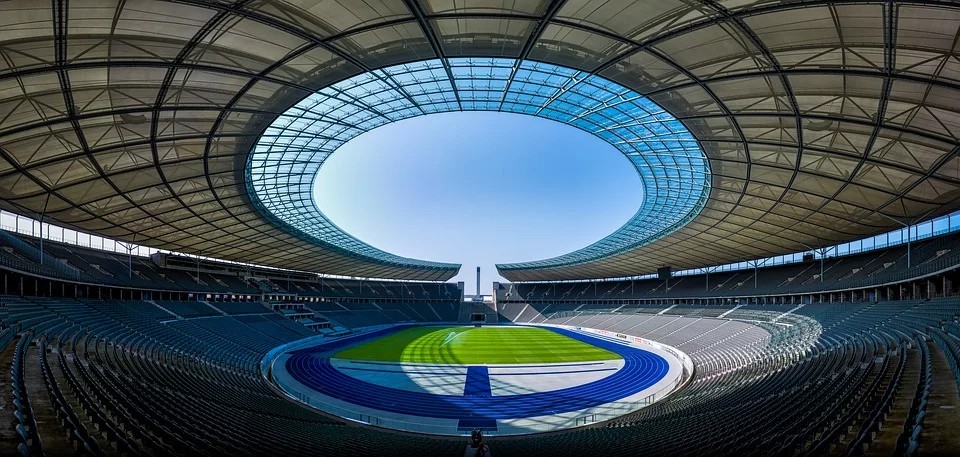The top 10 football stadiums in the world fans need to visit
source: StadiumDB.com; author: michał
 A list of 10 of the most historic, beautiful, or otherwise interesting football stadiums in the world. Many of which you may have won or lost a few bets at.
A list of 10 of the most historic, beautiful, or otherwise interesting football stadiums in the world. Many of which you may have won or lost a few bets at.
Advertisement
What Determines the Best Stadium?
Football, the beautiful game, is the biggest sport in the world, played and watched by billions in every country and on every continent. And every club needs its stadium, but how one defines the best is very much in the eye of the beholder. You might prefer the biggest, or the most attractive. For that matter, being sited in an exotic and interesting location might be a huge bonus. We’ve put together 10 of the best, a stadium list where every location is one a football fan would do well to visit.
Michigan Stadium
If size matters, then one of the best places to visit is the Michigan Stadium. It’s the (American) football stadium of the University of Michigan, but has also hosted a number of other sports. In 2014 it was the venue of a soccer match between Real Madrid and Manchester United, with attendance just over 109,000. It’s nicknamed the Big House, and if you believe big is beautiful you’ll be hard pressed to find many prettier places to watch football.
Camp Nou
Known as the Nou Camp by Anglophones and Camp Nou locally, the stadium has been the home of European powerhouse FC Barcelona since it first came into being in 1957. With a capacity of over 99,000, it’s the biggest stadium in Spain and Europe. Memorable moments include hosting two European Cup/Champions League finals, five matches of the 1982 World Cup, and the football final of the 1992 Olympics.

The Bernabeu
The Bernabeu, or the Santiago Bernabéu Stadium to use its formal name, is the home of Real Madrid, the fierce rivals of FC Barcelona. It’s been Real’s home stadium since opening in 1947, and is amongst the most prestigious footballing arenas in the world. The record attendance, back in 1956, exceeded 129,000, but today the capacity is a more comfortable 81,000. During its long lifetime it’s been renovated on numerous occasions, and has hosted finals for both the European Championship and World Cup, the first European stadium to do so.
When picking out this stadium or that to visit, it’s been striking that there’s such a geographical spread. There’s barely a corner of the globe that doesn’t enjoy football, and this same universal attraction can be found when it comes to the rise of online casinos. Gambling has never been more convenient, which has led to more and more people from around the world enjoying international casinos, wherever they live. Whether you’re a sporting fan who likes to place live bets while you’re watching the game (in person or at home), or prefer any number of online games you’ll find a casino, and bonus, for you.
Showa Denko Dome Oita
It may lack the name recognition or heritage of some other places on this list, but what it lacks in fame the Showa Denko Dome Oita makes up for with beautiful, modern architecture. The elegant design and sleek, futuristic roof are stunning. Currently with a capacity of 40,000, it’s the home ground of Oita Trinita. It hosted three matches in the 2002 World Cup (and has also hosted games in the 2019 Rugby World Cup). And if you’re visiting the stadium, you’re visiting Ōita Prefecture and can take in the hot springs of Beppu.
Wembley Stadium
A modern day successor to the old stadium (which was famous for its twin towers), today’s Wembley has an elegant arch that soars 133 metres/436 feet and supports most of the roof’s burden. It opened its doors in 2007, (its predecessor starting life in 1923). The stadium is the largest in England, with 90,000 seats, the second biggest in Europe, and hosts a variety of major games in England, including home internationals and FA Cup finals. Visitors can enjoy not only the home stadium of the nation that invented the beautiful game, there’s also one of the world’s top tourist cities to explore before and after a match.
Stade de France
The Stade de France is another new stadium in an old footballing nation, being built for the 1998 World Cup. France duly went on to win that tournament in the very stadium that bears its name. Despite being a young venue, the Stade de France has hosted two Champions League finals and two Rugby World Cup finals, making it the only stadium in the world to have hosted World Cups in both football and rugby.
Olympiastadion
The Olympiastadion of Berlin has a long history, dating back to the 1936 Summer Olympics, when its record attendance is thought to have exceeded 100,000. Substantially renovated in 2004, the stadium today has a capacity of just over 74,000, making it the largest in Germany. The home of Hertha BSC, the Olympiastadion has hosted matches in the 1974 and 2006 World Cups (including the 2006 final). Plus, it was the venue for the 2015 Champions League final, and matches in the 2011 Women’s World Cup.

El Monumental
Estadio Antonio Vespucio Liberti, or El Monumental as it’s most often known, is located in Buenos Aires and the home of the Argentine national football team. First constructed in 1938, it’s the largest stadium in Argentina with a capacity of 70,000. During its long history, the venue has played host to four finals of the Copa América, the 1978 World Cup Final (in which Argentina defeated the Netherlands), and was the central site of the 1951 Pan American Games.
Stadion Luzhniki
Featuring on the last publicly available list of UEFA’s five star stadiums, Luzhniki has an imposing, imperial presence. Perhaps this is unsurprising as it was opened in 1956, during the Cold War between the Soviet Union and the West. The design blends the architectural influences of modern and ancient Europe, with columns reminiscent of Ancient Rome. It was the main site in the 1980 Olympic Games, and with a capacity of 81,000 is the largest stadium in Russia. Located in Moscow, Luzhniki is now the home of Russia’s national football team.
Juventus Stadium
One of the youngest grounds on the list, Juventus Stadium was opened in 2011, making it more than a century younger than Juventus FC (founded in 1897). Unusually for a Serie A side, Juventus FC own the stadium, which has a capacity of 41,000. Especially handy for tourists, the stadium complex includes a club museum and a shopping centre, and hosted the 2014 Europa League final.
Advertisement
 StadiumDB
StadiumDB